Dragon Quest II (ドラゴンクエストII 悪霊の神々), released on Famicom 1/26/1987, developed by Chunsoft, published by ENIX
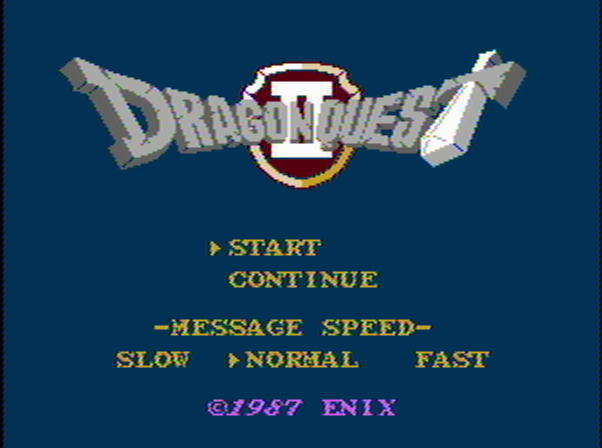
This is the first “random selection” game. The random draw gave me a strategy RPG, so I played the oldest game instead. Dragon Quest II is the second in the long-running Dragon Quest series, coming out only 6 months after the first one. As with the first one, it was released in the US several years later with a few changes (an added opening sequence and changing the passwords to battery save are the main ones).
There’s one thing I didn’t mention in my Dragon Quest review that I later noticed on the Japanese Wikipedia page, and that’s how friendly the game is in comparison to other RPGs and RPG-adjacent games at the time. If you look at every other game I’ve done for this early JRPGs segment of the blog, nearly all of them just start off by plopping you down in a starting screen with no indication of what you should do. The games are often full of incomprehensible secrets with no hints, and start you off with enemies that can kill you in a few hits if you don’t know what you’re doing.
Apparently this is how a pre-released version of DQ1 started, but when they tested the game out on some kids they didn’t figure out that they could enter the towns and had no idea what to do. So they modified the game to start you in the king’s chamber and force you to use some of the basic game mechanics just to leave the castle. On the whole, the game is much easier to finish without consulting outside hint guides/etc than any of the other games released at the time.
I think this represents the RPG genre’s slow emergence from the way that other games worked at the time. When you played a typical game in an arcade (or the first few years of Famicom releases), it was not that unusual to die quickly and get a game over in a few minutes. The idea that you might need to play the first screen a few times before you can even get much of a start was not that unusual. And few games could be “finished”, so the designers didn’t necessarily feel the need to provide fair hints and an easy way to complete the game.
Also if they looked to computer game models, they would see punishingly difficult games like Wizardry and Ultima that also had few hints, and not much of a sense of fair play.
All that is to say that I think Dragon Quest’s popularity may be at least in part because it was one of the first (if not the first) RPGs that was kinder to the player and didn’t seem to take it as a goal to annihilate the player’s party or character whenever possible.
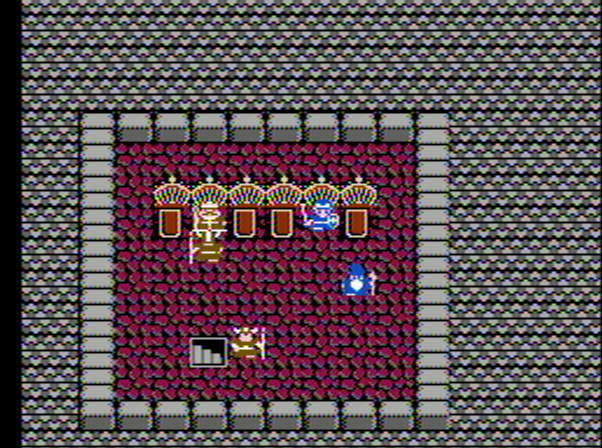
Because of the quick development time, it’s not surprising that the game is essentially a refinement of DQ1. It is a much larger game than the first one, but the biggest change is that you now have 3 party members vs. groups of enemies, rather than just the 1 vs 1 fights of the original game.
The story is a sequel to DQ1, with the main character and his two companions being descendants of Loto (Erdrick) from the first game. You begin as the Prince of Lorasia (Midenhall). The King hears that Moonbroke has been destroyed by Hargon, and sends you out to defeat Hargon after collecting your two cousins, the Prince of Samartria (Cannock) and the Princess of Moonbroke. I believe this is basically all the story of the game.
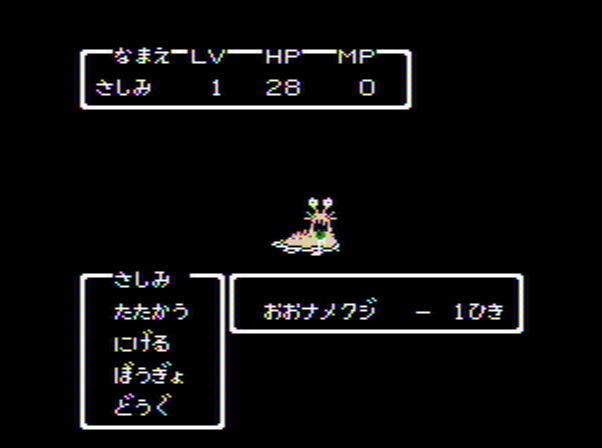
At the beginning you have only Lorasia, who is essentially a fighter class that can’t use any magic. This means the early part of the game is very much dependent on levelling and having the right equipment, although as usual the “die and lose half your gold” system means that you do not have to be extremely cautious in your explorations.
In my Super Famicom reviews I often referred to games as having a “Dragon Quest II system” (which I sometimes called AMID for Attack, Magic, Item, Defend). I wanted to play this for at least the first few dungeons to see if that judgment was accurate, and I think it is.
The first task is to find the Prince of Samartria, and you start out on a fairly small island that you can’t leave until you find him, which is a kind way to start the game out. You basically have to follow him around to various places and hear that he’s already left, while at the same time trying to get more levels and money to make your character better. The fact that Lorasia has no spells means your healing is entirely dependent on herbs (and antidotes), and the game has no bag like the one added in later. So there is some inventory juggling needed.
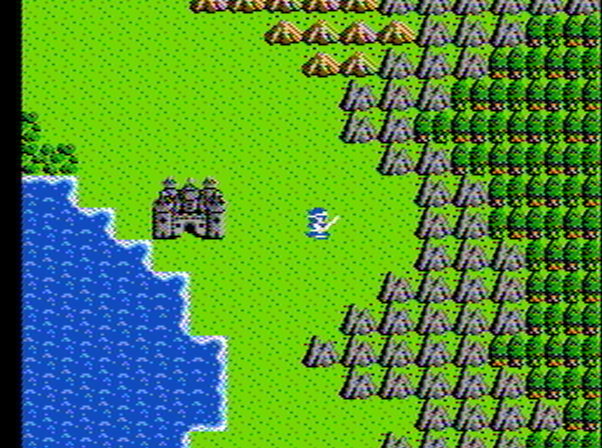
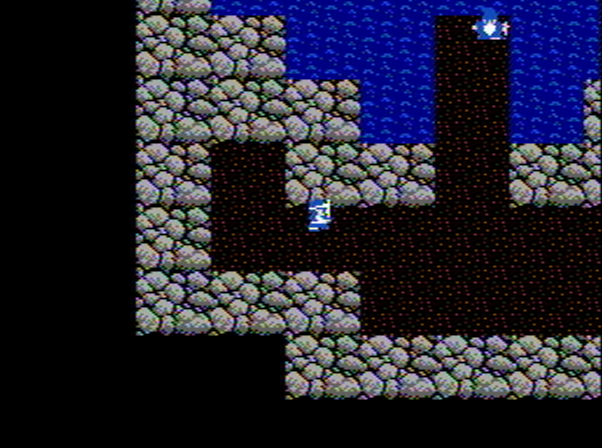
Eventually after going around to various places (including the cave above), I finally found Samartria in an inn and he joined the team. He is basically a combination healer and attacker.
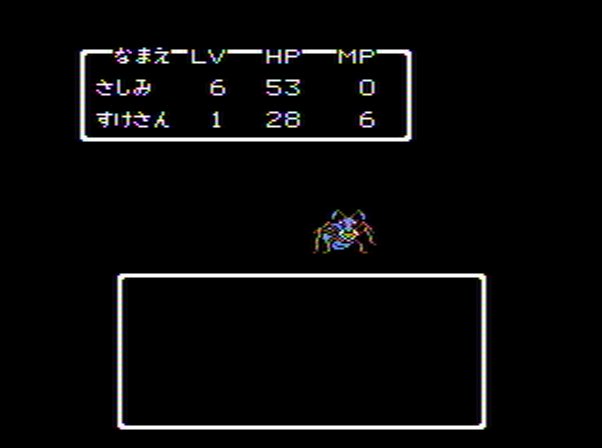
He begins at level 1, which means it’s good to do a bit of levelling before we leave this continent for the next one, hoping to find the Moonbroke Princess. Before leaving you can also get the Silver Key, which is technically optional. In DQ1 you had to buy keys that were used up after one use, but this game introduced the system that would be used at least through Dragon Quest VI, where you find increasingly powerful keys that open certain kinds of doors. I’ve always liked this system, where you have a locked door in an early town or dungeon that you know you will need to come back to later when you have the right key.
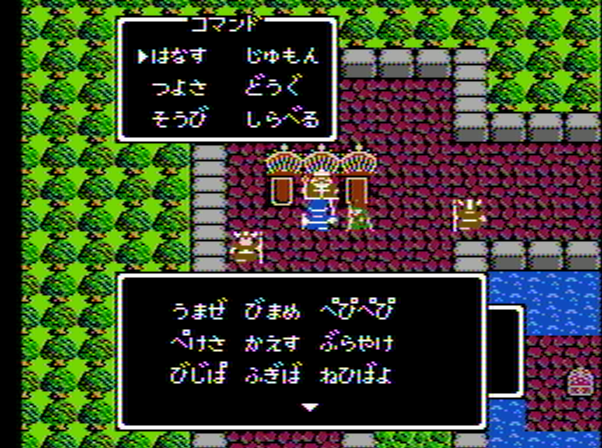
The next continent has the destroyed castle of Moonbroke. There you can learn that the princess has been turned into a dog, and that the Mirror of Ra can cure her. Someone tells you about a marsh that’s near bridges — I didn’t find any clue that specifically said this is where the mirror is but I guess you assume that if someone tells you about a location it’s important.
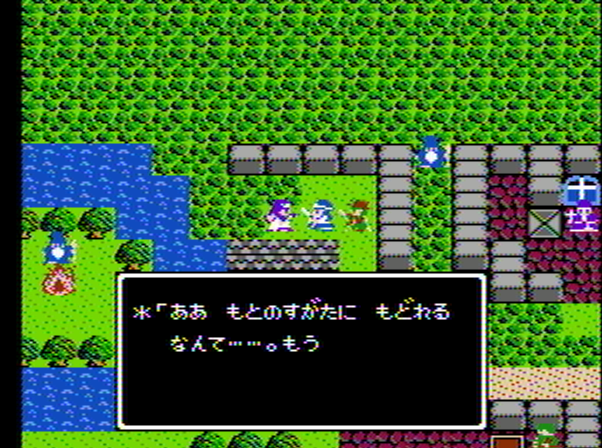
Once you get the mirror, you can restore the Princess and she joins the team. She is a magician character — these kinds of characters are often underpowered and difficult to use. As I mentioned in many of my “DQ2 clone” reviews, it took a long time for JRPG designers to break out of the Dungeons and Dragons/Wizardry system which dictates that there is basically no way to restore magic points except to rest. This means that magician characters often cannot freely cast spells because their MP are so limited, and they’re usually worthless as attackers as well. Eventually designers figured out that it’s OK to let people restore their MP and cast more spells.
This is where I decided to stop. This game is well known for being quite difficult and having a lot of balance issues, and one of the main things the various remakes of the game do is smooth this out a bit. They allow better equipment for the companions, easier level ups, and just generally a better balance and less frustrating game. Many years ago I played DQ2 on Game Boy, but I found even that version fairly frustrating to play, so maybe this game’s day has simply passed. But at the time it came out I can see why it was popular; compared to everything else it shows a level of development and amount of content that no other console game could match.
It’s kinda fascinating to see how Dragon Quest II works in perspective. This is one of the games from the series I never played, but it’s already changed up a good deal from DQ I. The series never had its Final Fantasy 7 moment in the West, but it’s still solid.. I wonder what they’re going to cook up for the next mainline game.